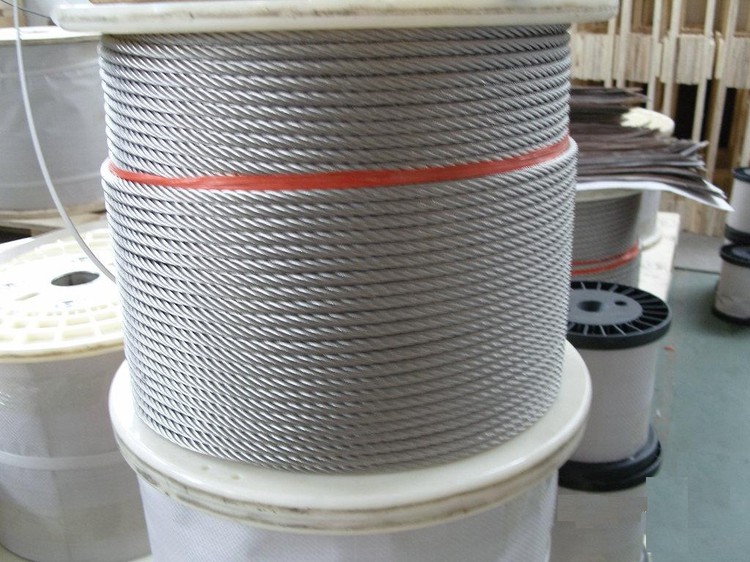 inquiry@kinocranes.com
inquiry@kinocranes.com +86-15993036980
+86-15993036980
 inquiry@kinocranes.com
inquiry@kinocranes.com +86-15993036980
+86-15993036980Henan Kino Cranes Co., Ltd
No.730, Xinghai Center, Hongqi District, Xinxiang, Henan, China
Tel: +86-373-3809941
M/P: +86-15993036980
E-mail: inquiry@kinocranes.com
Official Website: www.kinocranes.com
Steel Wire Rope

The steel wire rope is one of the important accessories on the crane. It is twisted into strands by multi-layer steel wires, and then centered on the rope core, a certain number of strands are twisted into a helical rope. In material handling machinery, it is used for lifting, pulling, tensioning and carrying. The steel wire rope has high strength, light weight, stable operation, and is not easy to break suddenly, and the operation is reliable.
How to properly wrap:
1.To wind the wire rope on the drum of the bridge crane, it is better to penetrate a steel pipe or round steel into the central hole of the wire rope reel first, so that the wire rope reel can rotate safely. Then cut the end of the wire rope neatly and tie it with adhesive tape so that it is not loose, then put the end of the wire rope into the fixed position of the end of the wire rope on the reel (squeeze and fix according to the original design) and fix it, and slowly turn the reel to wind in the direction of the fixed end Steel wire ropes are enough, mainly arranged neatly. The length of the wire rope should be calculated in advance. When the hook pulley block is full and the hook falls to the ground (or the lowest position), it is generally required that the wire rope on the drum should be wound no less than 3 times.
2.For the threading and winding of the pulley block, the steel wire rope coming down from the drum, that is, the "fast rope", first passes through the hook pulley block. Generally, it starts from the pulley on the opposite side of the fixed end of the steel wire rope, and then winds along, and finally fixes the rope end.
The following points should be paid attention to in this work:
1.The steel wire rope is packaged in a coil before leaving the factory. When opening the original coil of the steel wire rope, it must be done in the correct way, so as not to cause twisting or knotting.
2.When the wire rope is cut, there should be measures to prevent the strands from spreading.
3.When installing the wire rope, it should not be dragged in an unclean place, nor should it be wound on other objects, and it should be prevented from scratching, grinding, rolling and excessive bending.
4.In addition to lifting workers, electricians and fitters are required to cooperate.
5.Before threading, check whether the specifications and length of the wire rope are consistent with the drawings. When the hook is at the low point of the working position, the winding of the wire rope on the drum shall not be less than 2 turns except the number of turns for fixing the end of the rope (GB6067-85). When the installation elevation of the crane is lower than the installation design elevation of the bridge crane, it should still be wound according to the length specified in the drawing to prevent the wire rope from "jumping" on the drum. In this case, when the hook is at the low point of the working position, the number of turns is more than normal.
6.The two ends of the wire rope are fixed on the reel with a pressure plate, and the pressure plate is pressed tightly.
7.The wire rope should be well lubricated. Lubricate at least twice a month. First use a wire brush to remove the dirt on the wire rope and clean it with kerosene. Then dip the wire rope with lubricating oil heated to above 80°C, so that the lubricating oil is immersed in the rope core. When lubricating, special attention should be paid to parts that are not easy to see and not easy to access, such as the wire rope at the balance pulley.
8.After a comprehensive inspection without problems, start the lifting mechanism, lift and lower the whole process back and forth several times, if there is a phenomenon of rotation of the hook pulley block, remove the end of the rope and twist it in the opposite direction of the rotation of the hook pulley block for a few turns, and re-fix the end of the rope for a test run. After normal, carry out test run with load.
After the wire rope is wound, it must be ensured that the idling is normal before it can run with a load.